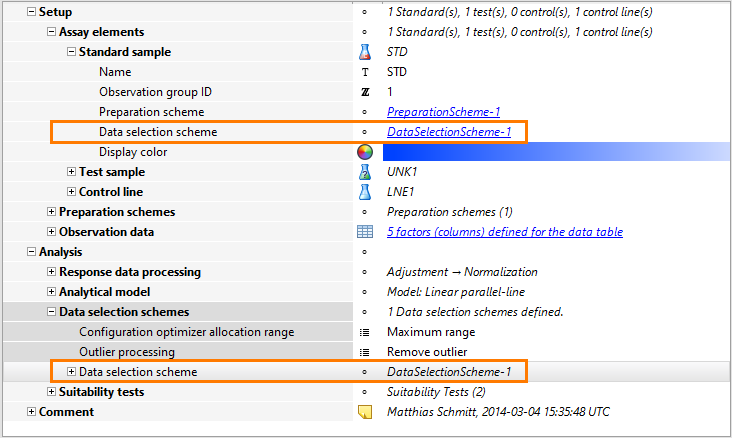Data selection schemes
Data selection schemes define which data PLA 3.0 considers in the analysis. You can select, for example, which data points or dilution steps you want to include. The default scheme simply selects all data points.
Outlier detection
Use outlier detection to identify and manage response values that do not fit the expected pattern. PLA 3.0 supports replicate-based outlier detection (Dixon, Grubbs, and Standard deviation tests) and model-based outlier detection (Studentized residuals test).
With outlier detection turned on, you can define how PLA 3.0 should process outliers. You can, for example, exclude outlying response values from regression, or only mark them as outliers in plots and reports.
Configuration optimization
Use configuration optimization to automatically detect the linear portion of dose-response curves. With optimization turned on, PLA 3.0 calculates all possible configurations of dilution steps as defined by the optimization parameters. If you use a partial dose range for potency calculation, configuration optimization is applied to the partial range only.
Two allocation ranges are available for optimization, that is, maximum range and best range. Use maximum range to find the maximum range where all suitability tests are passed, and best range to find the best range for regression using R squared.
If you set up configuration optimization such that no configurations remain for testing, PLA 3.0 calculates the assay with deactivated optimization and adds a warning message to the calculation dialog and the report.
Assignment to assay elements
You set up data selection schemes once and assign them to as many elements as you require.

